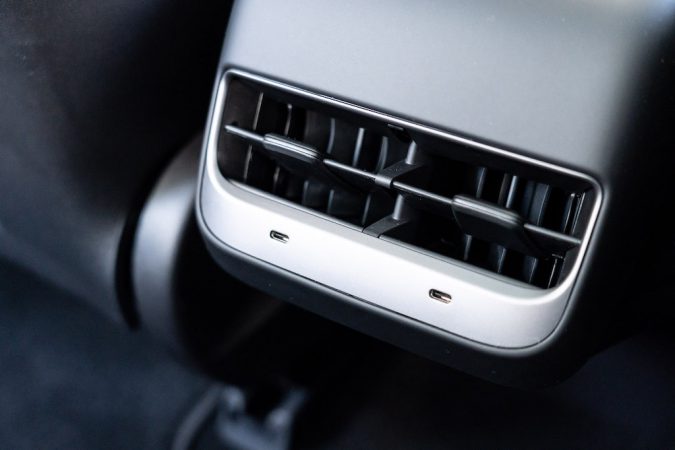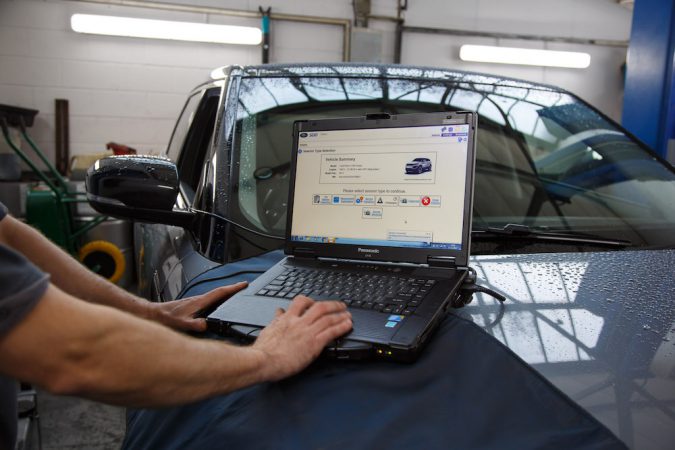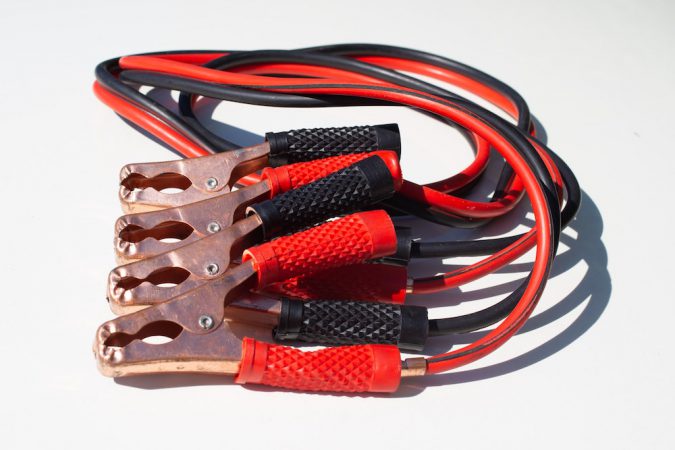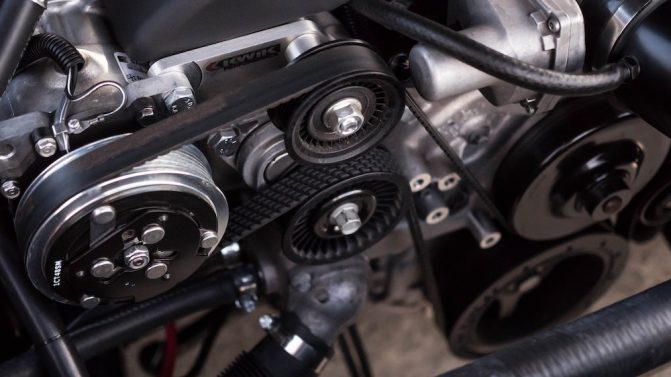When your car’s AC clutch not engaging or suddenly stops working, it could indicate a significant problem because the cool air is not blown into the cabin. It is critical to have your vehicle evaluated by a skilled mechanic as soon as possible in these circumstances.
Even if you’re using industry-standard synthetic oil or coolant, an AC compressor clutch can loosen due to an electrical issue. A clogged refrigerant circuit can also prevent the AC clutch from engaging in some cases. In this article, we will provide some basic measures to assist you in solving this problem.
What Is An AC Clutch?
The car’s engine powers the AC compressor. It is controlled by an electromagnetic switch that is linked to a clutch system with a shaft that connects and disconnects from the crankshaft’s rotational shaft.
The compressor and the clutch are the two most essential components of an automobile’s AC system. As a result, it’s critical to keep these two in good working order at all times. All you have to do is power on the clutch compressor whenever you want to utilize the air conditioning in your car.
The engine activates the clutch compressor, which is belted directly to the compressor’s pump rotor. Most car AC systems, on the other hand, now use an electromagnetic clutch to engage the compressor and spin the air conditioning unit.
A friction plate is located close to an electromagnetic coil in an AC compressor clutch. The electromagnetic coil receives a current flow once the compressor clutch is engaged. It generates an electromagnetic force that attracts the coil to the friction plate. The pump rotor receives electricity from this, which keeps the compressor operating.
How Does A Car AC Compressor Work?
To disengage and engage the air conditioning compressor, the majority of car manufacturers use an electro-magnetic clutch. A magnetic field pulls the clutch in towards the pulley, as previously stated. After that, the compressor shaft will be splined to the clutch disc. The pulley also supplies the rotating power required to operate the compressor when this occurs. The air conditioning compressor will begin pumping refrigerant once the clutch is successfully engaged.
So, what do you do if the compressor won’t turn on? Start the engine after setting the A/C settings to MAX A/C. Next, take a look at the compressor clutch’s front end. Both the clutch and the pulley should be rotating at this point. If this occurs, the clutch is correctly engaged with the pulley. If all you see is the pulley spinning, something is wrong with the system.

Why My AC Clutch Not Engaging?
Before we get into the specifics of why the AC clutch not engaging, it’s important to understand what the AC clutch is and how it works. The AC clutch is a component of the AC compressor, which is the system’s beating heart. As a result, the system must be adequately maintained at all times in order to provide a satisfactory cooling result.
When operating the car’s air conditioning, the compressor must be turned on. As previously indicated, the clutch must be powered and engaged to the rotating pulley for the compressor to turn. A friction plate is positioned near an electromagnetic coil in the compressor clutch.
When the operator clicks the AC button, the electromagnetic coil is activated and linked to the pump rotor by the strong electromagnetic force. As a result, the compressor spins and compresses the refrigerant.
Now that we know what an AC clutch is and how it works. Let’s look at some of the reasons why the AC clutch not engaging.
1. The AC Compressor Clutch System Has An Open Circuit
The AC compressor clutch system is regulated by an electrical circuit, as previously stated. In a closed circuit, it should work. The AC compressor clutch will not engage if the AC system wiring circuit has an open circuit. In addition, your car’s air conditioner will not function normally. The most prevalent reasons for the compressor AC clutch not engaging are listed below.
1.1. AC Compressor Clutch With Blown Fuse
The system is protected from overload current capacity by utilizing a fuse. If an overload current travels through this fuse, the fuse will blow, and the electricity will stop flowing. When the AC clutch fuse blows, the AC clutch engages and then shuts down.
We can see that the AC clutch is no longer rotating. As a consequence, the AC compressor clutch is not powered, and your car’s air conditioning system is unable to lower the temperature.
1.2. AC Compressor Relays That have Failed
The AC clutch compressor employs a relay in addition to a fuse. The relay role is to protect the AC switch module in the dash panel from a huge electric current. The coil of the relay may break up in some instances, halting the flow of electric current via the relay.
As a result, the AC clutch not engaging will occur because the electric current from the battery to the AC compressor clutch coil does not flow.
1.3. The AC Clutch Coil Is Broken
Your compressor AC clutch not engaging due to a bad AC clutch coil. A damaged AC clutch coil, in most circumstances, signifies that the coil inside has broken down. The electric current will not flow through the AC clutch coil when it is split up; hence the coil will not generate an electromagnetic field. It also causes the AC clutch not engaging.
1.4. The A/C Expansion Valve Is Broken
The AC expansion valve is less expensive to replace than the evaporator coil. It’s also a straightforward replacement. When the AC compressor does not switch off, you know your AC expansion isn’t working properly. It’s possible that the vents are frozen shut. As a result, the vents may be emitting heat.
1.5. AC Switch Module Failure
Your compressor AC clutch not engaging due to a defective AC switch module. This module is a switch that we frequently utilize from the vehicle dashboard to turn on the air conditioning system. The AC switch module can malfunction or error in a variety of ways.
The electric current flow to the AC clutch coil would be disrupted by this faulty AC switch module. As it turns out, the AC clutch no longer engages.
1.6. Insufficient Grounding
The poor ground is the last open circuit in the AC compressor clutch that prevents it from engaging. Near the AC compressor, we can see the cable ground. It corrodes and breaks up from time to time. Because of the weak ground, the electric flow can be disrupted, lowering magnetic power and causing the AC clutch not to engage.
2. A Malfunctioning Refrigerant Pressure Switch
A malfunctioning refrigerant pressure switch is the second most common reason for the compressor AC clutch not engaging. To convert heat into cool air, the AC system requires refrigerant. The refrigerant will be pumped as the AC compressors function.
To adjust the refrigerant pressure, AC systems use pressure switches known as refrigerant pressure switches. Several refrigerant pressure switches can be found in most automobiles. There are two types of pressure switches: high-pressure and low-pressure.
The AC compressor clutch is frequently connected to the low-pressure switch. The electric current will not flow to the ground if the low-pressure switch fails. It prevents the AC compressor relay from working. The AC clutch not engaging occurs as a result.
3. Insufficient Refrigerant Volume
Poor refrigerant volume is the third most prevalent cause of compressor AC clutch failure. To function properly, an air conditioning system requires precise refrigerant volume. The AC system might be severely harmed if the temperature is too low or too high.
Poor refrigerant volume is a common cause of this problem, i.e. the AC clutch not engaging. The low-pressure switch might be impacted by low refrigerant volume. As previously stated, the AC compressor relay is controlled by a low-pressure switch. The switch will not work if there is insufficient pressure. As a result, the compressor clutch on the air conditioner does not engage.
4. Failure Of The Control Head/Computer
Through the system’s dash-mounted control head, an A/C clutch receives its operational commands from the driver. Any form of failure within this device can prevent the coil of a clutch from being activated. Control head signals are often routed through a vehicle’s ECM/PCM. As a result, partial failure of a control module can result in compressor clutch functioning.

How To Engage An A/C Compressor Clutch Manually
Manually activating an A/C compressor’s clutch can be useful in a variety of situations. This method may be the most effective when attempting to detect whether or not the clutch has failed.
Providing different hot and ground sources to the clutch coil can help you locate the source of compressor clutch problems. The methods below will show you how to use the jump method to engage the clutch assembly on your A/C compressor manually.
1. Disconnect The Clutch Wiring Pigtail:
Locate and disconnect the wiring pigtail that connects to your compressor’s clutch assembly. The wiring for this assembly usually comes from behind the air conditioner, towards the compressor’s front end.
2. Identify The Power And Ground Wires:
Next is to identify the power and ground pins within this connector. Always check a manufacturer wiring diagram for your unique car when in doubt.
3. Make Jumper Wires:
For both the power and ground ends of your compressor’s control circuit, make jumper wires. It’s critical to incorporate an inline fuse in the jumper wire intended for usage on the circuit’s positive side. Attaching alligator clips to the supply end of these jumper wires, which can be readily attached to your battery’s terminals.

4. Connect Jumper Wires:
Now is the time to connect your newly constructed jumper wires. Ensure that the fused jumper wire is connected between the positive wire of your clutch coil and the positive post of your battery. Similarly, connect the clutch coil’s negative wire to your battery’s negative post with the remaining jumper wire.
5. Analyze the Findings:
You will now be able to assess whether or not your A/C clutch is defective based on your observations. When your compressor’s clutch fails to engage when jumped, it’s time to replace it.
The sudden backward movement of the assembly’s clutch plate, accompanied by an audible “click,” will indicate engagement. If the clutch on your A/C compressor engages when you jump it, you’ll need to look into it further because the underlying fault is in the system’s control circuit.
Can A ‘Dead’ Compressor Be Charged?
Yes, you certainly can. The recharge kit must first be connected to the suction. It’s worth noting that low-pressure tubing is always greater in diameter than high-pressure tubing. The kit fitting also only connects to the low-pressure port. After that, set the key to RUN and the blower fan to HIGH. Turn the A/C to MAX to activate the radiator fans. It’s time to get started.
Is your vehicle equipped with an orifice tube system? The refrigerant gas will most likely enter the condenser coil through one of the open compressor reed valves. Allow the fan to run for a few minutes. After that, you should be able to close the low-pressure switch with enough pressure. If nothing works, don’t hot-wire the low-pressure switch; instead, see a professional to diagnose the problem.
How To Check If Your Air Conditioning Clutch Is Working
Keep in mind that the compressor’s primary responsibility is to ensure that the refrigerant is converted from gas to liquid. You might think of it as the AC’s heart and the refrigerant as its blood. The compressor will not work if the clutch is not connected to the compressor, and hence the air conditioning system will fail to keep the vehicle cool.
Use the Following Steps to see if the Clutch is in Excellent Working Order:
- Set the air conditioner to its utmost setting.
- Start the engine of the car.
- Take a close look at the front area of the clutch.
- Ensure that the clutch and the pulley are spinning at the same time.
- The clutch will not run if the only spinning element is the pulley.
Here’s a Helpful Hint:
It is preferable to consult with a vehicle professional if you are unsure about performing the inspection yourself. You might also use a car diagnostic tool to scan a problem with a car. Because an AC compressor failure is almost always linked to the engine, it’s critical to address this issue seriously.
What To Do If Your AC Clutch Not Engaging?
You can try the following troubleshooting steps to get your AC clutch to re-engage:
Check The Oil Level In The Compressor
Through a red line on the display glass, you may check the oil level of your AC compressor. If the level falls below the red line, the gas oil supply is depleted and must be supplemented.
Check to see if the oil you’re using is compatible with your compressor.
If your AC system’s manufacturer doesn’t recommend it, don’t use it. Specifications can be found in the user handbook for your air conditioner.
Get Rid Of The Refrigerant That Has Been Overcharged
If a refrigerant has overcharged your compressor, your AC system may read an unnaturally high pressure. Check the user handbook to find out the exact operating pressure on the high-pressure side of your AC system.
If you discover that an overcharged compressor causes the problem, drain the refrigerant using a discharged valve near the gauge. Allow it to bleed until the pressure is just right.
Refrigerant Should Be Added
A compressor with inadequate refrigerant is the total opposite of an overcharged refrigerant. When the pressure gauge on the high-pressure side of your compressor indicates a pressure lower than what it requires, you’ll know it needs extra refrigerant. Please consult your car’s air conditioning manual to determine the proper level of pressure.
You can refresh your refrigerant with repair kits that you may purchase. You won’t have to worry about how to replenish your refrigerant with these repair kits because they come with instructions. However, if the refrigerant level in the AC system is so low that it can’t engage the compressor clutch, a DIY kit may not be enough to recharge it.
It’s likely to leak if there’s air and moisture in the system. Leakage is a major issue that needs to be addressed as soon as possible. If not, moisture will react with the oil and refrigerant, causing acid and destroying the entire air conditioning system. If this happens, you’ll have to empty the system and remove all of the air before it can be recharged.
AC Compressor Vs. Replacement AC Clutch
The main rationale for replacing a full air conditioner compressor and clutch assembly is to improve long-term reliability. It’s possible that the AC clutch pulley has to be replaced, but it’s also possible that it damaged the compressor on its way out. If the clutch overheated, it could have distorted the aluminum case, creating stress fractures or making it difficult to install a replacement clutch.
If the bearing inside the pulley wears out, any side-to-side motion will be transferred to the compressor shaft, causing it to wear out even faster. By providing the compressor and clutch as a whole unit, you can ensure the quality of the compressors with usable warranties.
The ease of service is the second reason to replace the entire compressor unit rather than just the clutch pulley. This saves money on mechanic labor and makes work easier. In some cases, the complete assembly must be removed in order to access the bolts that secure the pulley. If you need to repair the compressor body, the clutch will be removed anyhow, so why chance having to redo the task by reinstalling an old, used part?
Damage to the clutch could make it difficult or impossible to remove the old one, which would be irritating to learn halfway through the process if you didn’t have a spare compressor on hand.
Replacing your A/C compressor, clutch, and drier all at once improves reliability, extends the life of your warranty, and reduces long-term repair expenses.
AC Compressor Clutch: Facts on Why it’s Not Engaging
- The AC compressor clutch is an essential part of your car’s AC system designed to engage and disengage the compressor pulley from the compressor drive through an electromagnetic switch.
- If your AC clutch won’t engage, the problem could be due to a clutch sensor-default lockout, blown/burnt fuse, damaged ground wire, leaking evaporator coil, or worn/damaged clutch plate.
- Other reasons for the AC clutch not engaging include a broken AC expansion valve, broken driver/receiver, clogged condenser, and improperly set compressor clutch air gap.
- To diagnose an AC clutch not engaging, set your car’s AC settings to max, start the engine off, and look at the AC compressor under the hood. If the clutch and pulley are spinning, it’s okay, but if it’s only the pulley rotating, there’s an issue with the system.
- To fix an AC clutch not engaging, add more coolant to the system, recharge the refrigerant, or replace the compressor clutch if it’s worn out. If there’s a leak in the system, have it checked to prevent damage to the AC system.
- If you repeatedly test the system and can’t engage the AC compressor clutch manually, you may have to jump-start it by connecting the clutch wire to the battery directly.
- Several reasons may cause the AC clutch not to stay engaged, including a blown-out fuse, low-pressure switch lockout, bad clutch coil, wire gap to the clutch coil, bad engine coolant temperature switch, or poor ground.
- If your AC clutch engages and disengages repeatedly, it could indicate that your car’s system is low on refrigerant.
- If the AC clutch is engaging, but there’s no cold air, it could be due to an empty AC system caused by a leak or damaged AC condenser, faulty AC pressure switch, or bad compressor.
- The AC system features various pressure switches that open and close based on the refrigerant levels in the system. Too much or too low of the refrigerant will result in the clutch disengaging.
- Never charge the AC system forcibly, use the Freon coolant or octane booster if the coolant level is too low, and always ensure that the AC compressor has enough oil at all times.
Frequently Asked Questions – AC Clutch Not Engaging
Here are some popular FAQs:
1. How Do You Activate The AC Compressor Clutch Manually?
Ans:
- Check the refrigerator and compressor oil levels if the AC compressor clutch does not engage automatically when the AC switch in the automobile AC panel is turned on.
- Unplug the single wire connector on the compressor’s front side, then connect a jumper wire to the wire you just disconnected from the compressor.
- Connect the other end of the jumper wire to the car battery’s positive terminal. This will allow you to start the compressor manually.
2. What Are The Signs That My AC Clutch Relay Is Faulty?
Ans: There are a few indicators that can assist you in figuring out if the AC clutch relay is bad. The AC compressor does not turn on, which is the most evident indicator of a malfunctioning AC clutch relay. When the clutch is connected, you should hear a click sound.
If you don’t hear the clicking sound, it’s a sign that the compressor isn’t getting enough power due to a faulty relay. If there is no air flowing out of the AC, it could be a symptom of a failing clutch relay. The compressor will not run if the clutch relay fails, and the AC will not produce cold air.
3. Should The AC Compressor Clutch Be Free To Spin?
Ans: When fully disengaged, the AC compressor clutch spins freely. When the compressor and pulley are engaged, they will also spin freely. The AC clutch is not engaging and needs to be replaced if it spins freely every time the compressor is turned on.
4. Will My AC Clutch Engage If My Freon Level Is Low?
Ans: When the Freon tank is empty or low, it will cause the AC clutch not to engage. The compressor will not spin because the low-pressure switch prevents the AC clutch from engaging. The compressor will not engage as a consequence of this. Leakage is the most likely cause of low Freon levels. Check for any leaks after refilling the Freon to avoid the problem from recurring.
Final Verdict:
It’s not difficult to figure out what’s wrong with your AC compressor clutch. The purpose of this article is to provide a few ways for troubleshooting AC clutch issues. It also clarifies how the system functions. If something in the air conditioning system isn’t working properly, you’ll know something is amiss.
If none of the methods for resolving the problem have worked, you should take it to a mechanic to have your car’s air conditioning system checked. Examine all the factors as much as possible to see why the AC clutch is not engaging. Fuse, Coolant or Refrigerant, and Compressor Oil are examples of these.


This is a common issue with AC compressors. If the compressor is not engaging, it may be due to a number of things, including a dirty filter, a clogged filter, a worn out motor, or a broken belt. If